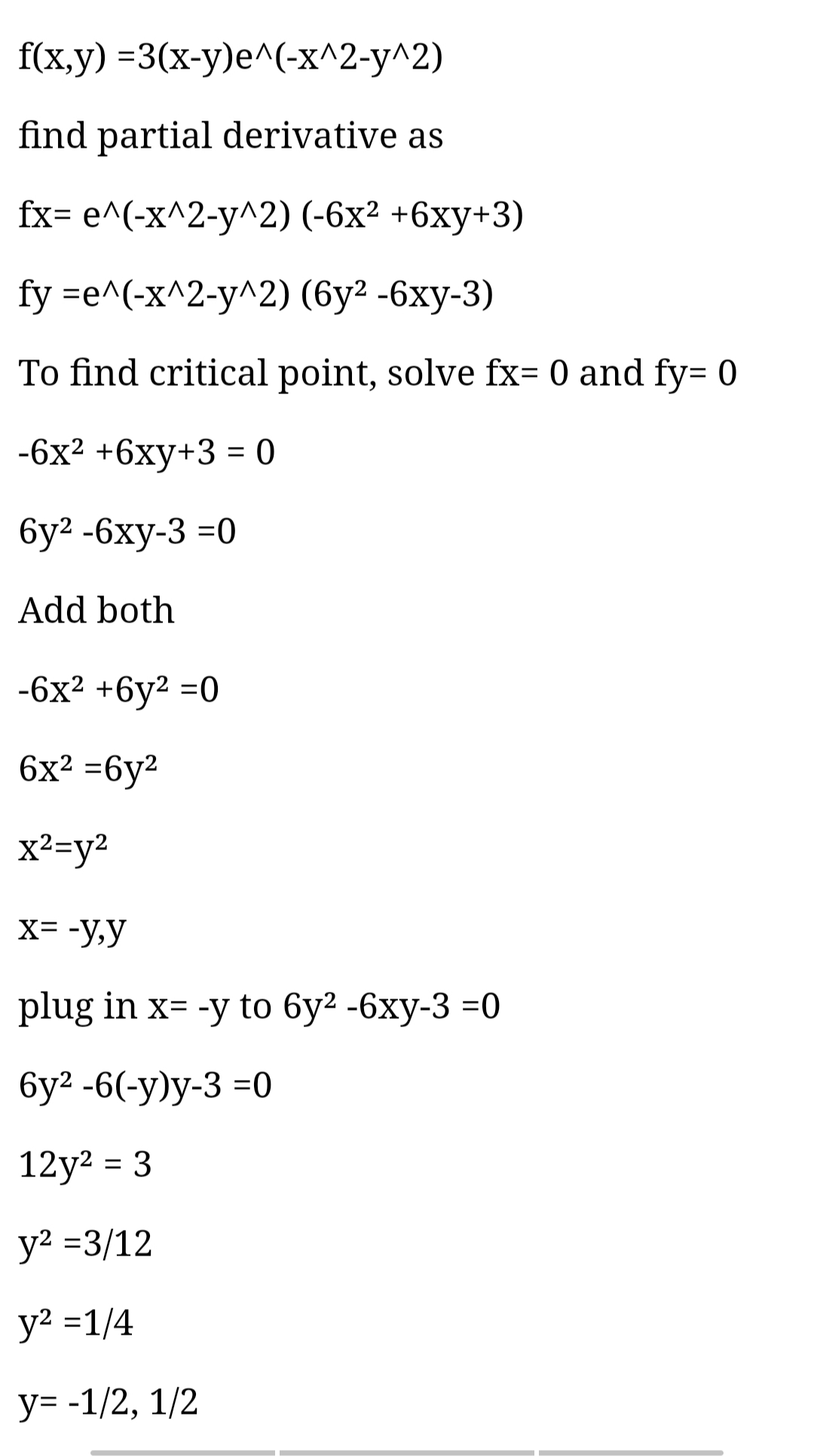Use a graph or level curves or both to find the local maximum and minimum values and saddle points of the function. Then use calculus to find these values precisely. (Enter your answers as a comma-separated list. If an answer does not exist, enter DNE.) f(x, y) = 3(x - y)e-x² - y² local maximum value(s) local minimum value(s) saddle point(s) (x, y, f) =
Use a graph or level curves or both to find the local maximum and minimum values and saddle points of the function. Then use calculus to find these values precisely. (Enter your answers as a comma-separated list. If an answer does not exist, enter DNE.) f(x, y) = 3(x - y)e-x² - y² local maximum value(s) local minimum value(s) saddle point(s) (x, y, f) =
Advanced Engineering Mathematics
10th Edition
ISBN:9780470458365
Author:Erwin Kreyszig
Publisher:Erwin Kreyszig
Chapter2: Second-order Linear Odes
Section: Chapter Questions
Problem 1RQ
Related questions
Question
Use a graph or level curves or both to find the
f(x, y) = 3(x − y)e−x2 − y2

Transcribed Image Text:Use a graph or level curves or both to find the local maximum and minimum values and saddle points of the function. Then use calculus to find these values precisely. (Enter
your answers as a comma-separated list. If an answer does not exist, enter DNE.)
f(x, y) = 3(x - y)e-x² - y²
local maximum value(s)
local minimum value(s)
saddle point(s)
(x, y, f) =
Expert Solution
Step 1

Step by step
Solved in 2 steps with 2 images

Recommended textbooks for you

Advanced Engineering Mathematics
Advanced Math
ISBN:
9780470458365
Author:
Erwin Kreyszig
Publisher:
Wiley, John & Sons, Incorporated

Numerical Methods for Engineers
Advanced Math
ISBN:
9780073397924
Author:
Steven C. Chapra Dr., Raymond P. Canale
Publisher:
McGraw-Hill Education

Introductory Mathematics for Engineering Applicat…
Advanced Math
ISBN:
9781118141809
Author:
Nathan Klingbeil
Publisher:
WILEY

Advanced Engineering Mathematics
Advanced Math
ISBN:
9780470458365
Author:
Erwin Kreyszig
Publisher:
Wiley, John & Sons, Incorporated

Numerical Methods for Engineers
Advanced Math
ISBN:
9780073397924
Author:
Steven C. Chapra Dr., Raymond P. Canale
Publisher:
McGraw-Hill Education

Introductory Mathematics for Engineering Applicat…
Advanced Math
ISBN:
9781118141809
Author:
Nathan Klingbeil
Publisher:
WILEY

Mathematics For Machine Technology
Advanced Math
ISBN:
9781337798310
Author:
Peterson, John.
Publisher:
Cengage Learning,

